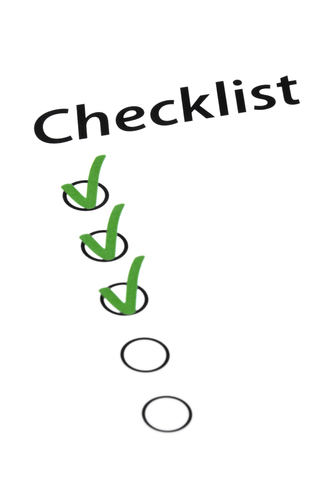A Simple Blogging SEO Checklist
 Write a blog post ==> Check for typos ==> Publish.
Write a blog post ==> Check for typos ==> Publish.
That’s the process most people take when writing a blog post. Heck, some people skip the second step.
Then, they wonder why no one’s reading… Why no one’s commenting… And why no one’s visiting their website.
Well, here’s the thing, there’s quite a few other steps you might be skipping to really give your blog posts a chance to get noticed.
So before you go writing this whole blogging thing off as too much of a hype, here’s a few ways to optimize your blog posts for better search results…
1. Keyword Research.
Before you publish your post, do a little keyword research and optimize your post title for better results. Say you’re writing a post titled: Guide for First-Time Home Buyers. The problem with this title is it’s not very targeted. So you might change it to something like: 1st Time Home Buyer Tips: Hire A Buyer’s Specialist When Buying Irvine Homes & Condos.
I recommend using Google’s Keyword Tool to do a little bit of research on what terms are trafficked the most. In other words, what phrases are people typing into search engines to look for something. Then, you can determine how well you’ll be able to rank for a particular keyword/phrase.
2. Optimizing Your Headline.
For optimal title-tag SEO, your goal should be to place the keyword phrase as close as possible to the front of the headline. So you might write something like:
- Irvine Real Estate Market Report: January 2012
- Irvine Mortgage Rates Report: January 18, 2012
See how in both cases, I placed the keyword phrase towards the front of the title?
3. Optimize Your Post Slug.
Personally, I’ve always had trouble with this part…
When you write the title for your new blog post, WordPress automatically generates the post slug for you by placing every word of your title into the slug URL.
Take this post for example, the automatically generated post slug reads: /a-simple-blogging-seo-checklist.
Rather than having so many small words, I’m changing it to: /blog-post-seo-checklist -OR- /seo-checklist.
This way, my post slug is just my primary keyword(s) that I intended to have to optimize my post.
5. Optimize Your Images.
As a rule of thumb, we include one image with every post that we write. You should to the same. But, don’t forget to optimize those images for search as well. Here’s how…
When you save your image, title the image file using your keyword phrase. So your image title might look something like: keyword-phrase.png.
Then, when you upload, your image title should read: keyword phrase. And you’re “alt text” should also read: keyword phrase.
6. Optimize Your Post Meta-Description.
Your meta-description tag is a sentence or two that tells search engines in plain English what your page is about. This meta tag is what will show up in search engine results below your page title, so it’s important to be clear what your post/page is about but without being too wordy.
This will not only show in search results, but when you share your posts through social networks like Facebook and Google+ (ever notice that description that posts along with your link – that’s the meta-description).
Google shows the first 156 characters of your meta-description tag in their search results, so be sure to keep your description tag brief and to the point. And although it won’t attribute to your search rank, it will affect your click-through rate. Here’s what Google’s Webmaster Tools has to say about it:
“While accurate meta descriptions can improve clickthrough, they won’t impact your ranking within search results. We frequently prefer to display meta descriptions of pages (when available) because it gives users a clear idea of the URL’s content. This directs them to good results faster and reduces the click-and-backtrack behavior that frustrates visitors and inflates web traffic metrics.”
Your Blogging Checklist:
[ ] Write your post.
[ ] Do your keyword research and edit your post so it’s optimized for search in accordance with the terms people are likely to search for.
[ ] Check your post title for SEO.
[ ] Edit your post slug to make it shorter and optimize it for SEO.
[ ] Edit your image for SEO.
[ ] Add a post meta-description.
[ ] Put the post in the appropriate blog category (one category per post).
…and finally, publish!
Can you think of anything else to add? Anything missing from this SEO checklist to give your blog posts a boost?
